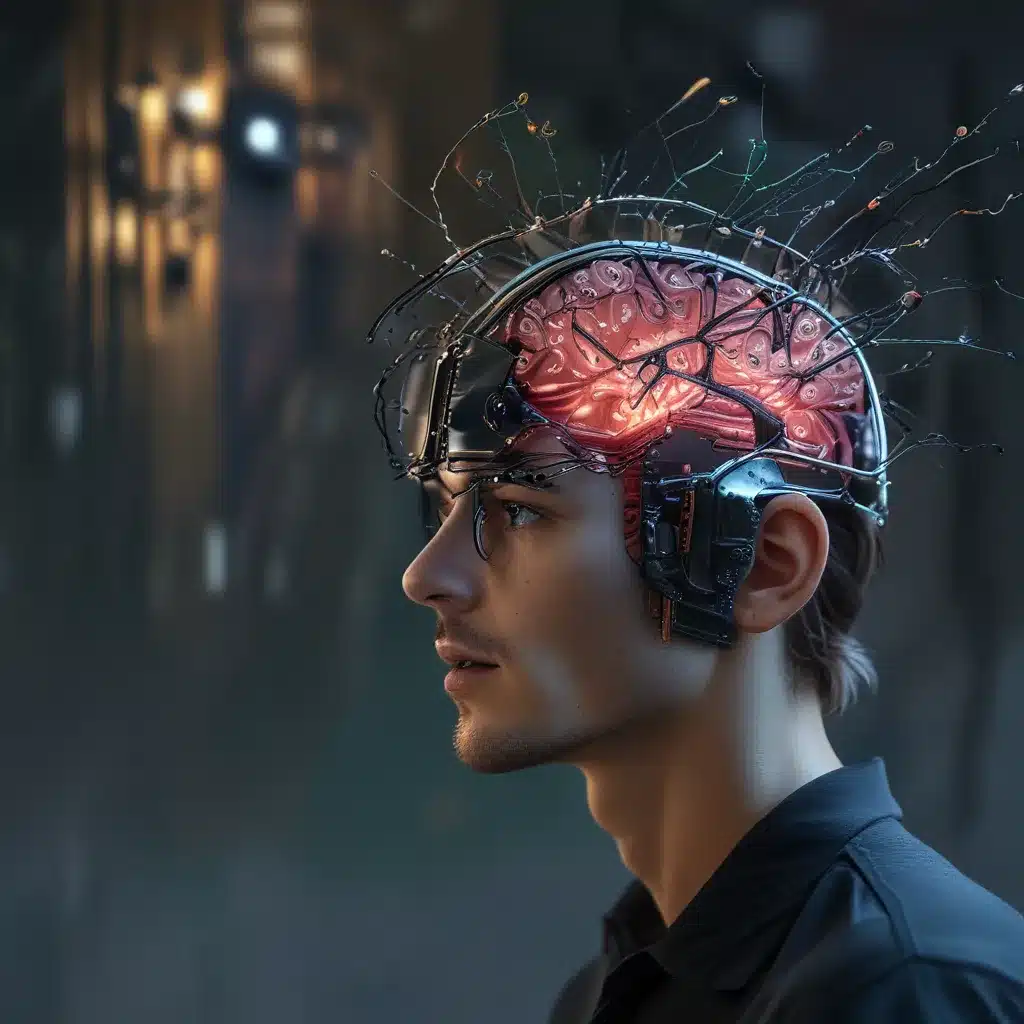Unlocking the Mysteries of the Mind
Have you ever wondered what it would be like to control a computer with just your thoughts? Or to directly interface your brain with digital systems, allowing you to manipulate objects and communicate in ways that transcend the limits of our physical bodies? If you’re fascinated by the idea of merging the human mind with the power of technology, then you’re in for a treat. Welcome to the exhilarating world of brain-computer interfaces (BCIs) – the next frontier of computing that’s poised to transform how we interact with machines, and perhaps even with each other.
As Forbes recently reported, the human brain is the most complex and powerful computer we know of, far surpassing even the most sophisticated artificial intelligence algorithms in its sheer complexity and diversity of capabilities. It’s no wonder then that researchers and tech innovators have long been fascinated by the idea of bridging the gap between our biological gray matter and the digital realm.
A Short History of BCI Breakthroughs
The quest to connect the human brain with machines dates back decades. As early as the late 1960s, scientists were experimenting with using electrodes to control simple electrical devices like lightbulbs, first with monkey brains and then with human participants. These early forays into brain-computer interfacing were often focused on helping amputees regain control of synthetic limbs – a goal that remains a key focus of BCI research to this day.
The first major breakthrough came in 1988 at the University of Rochester, where researchers successfully demonstrated the ability to use brain signals to move a computer cursor across a screen. Over the following decades, as surgical techniques evolved and our understanding of the brain deepened, BCIs began to advance rapidly. By the late 1990s, researchers could even reproduce images seen by cats by decoding the firing patterns of neurons in their brains.
One of the best-known pioneers in this space today is Neuralink, the company founded by tech visionary Elon Musk. Neuralink has developed highly sophisticated implantable brain-machine interface (BMI) devices, such as its N1 chip, which can directly interface with more than 1,000 different brain cells. Their goal is to enable people suffering from paralysis to regain mobility through the use of machines and prosthetic limbs, as well as to explore potential treatments for conditions like Alzheimer’s and Parkinson’s disease.
Pushing the Boundaries of Human-Machine Interaction
The progress made in BCI technology over the past few decades has been truly remarkable. Just imagine: a woman who had suffered a stroke and lost the ability to speak was recently able to communicate at a rate of 78 words per minute, just by thinking the words and having an AI system translate her brain activity into speech output. That’s the kind of life-changing potential that BCI technology holds – the ability to restore lost faculties and fundamentally transform how we interact with the world around us.
But the implications of BCIs go far beyond just assisting those with disabilities. Researchers are exploring ways to use this technology to enhance our natural senses and capabilities in ways that seem almost science-fictional. Imagine being able to control a device or communicate with another person simply by thinking about it – no need for cumbersome keyboards, mice, or even voice commands. Or what if you could create a digital representation of any object or person you can visualize in your mind?
The possibilities are truly staggering, and we’ve only begun to scratch the surface. Companies like Bitbrain and NextMind are developing wearable brain-sensing devices that use AI to interpret EEG signals, unlocking a range of exciting applications in fields like neuroscience, health, and even gaming. And in academia, researchers are pushing the boundaries even further, using machine learning to decode brain signals and classify mental states with remarkable accuracy.
Ethical Considerations and the Future of BCI
Of course, with great power comes great responsibility. As we venture deeper into the realm of brain-computer interfaces, we must also grapple with the profound ethical implications that this technology presents. After all, the idea of being able to directly access and decode a person’s thoughts and memories is the stuff of dystopian sci-fi nightmares.
What happens when we can essentially “rewind” a person’s mental “movie” and access their most private memories and experiences? How do we ensure that this technology doesn’t fall into the wrong hands and become a tool for manipulation or invasion of privacy? These are the kinds of questions that will need to be carefully considered as BCI development continues to advance.
Yet, despite these legitimate concerns, the potential benefits of BCI technology are simply too compelling to ignore. As the team at Contrary eloquently observes, “the field of study and technological development also offers plenty of exciting potential and could also have countless positive uses.” From restoring mobility and speech to the disabled, to enhancing our senses and expanding the boundaries of human cognition, the future of brain-computer interfaces is truly awe-inspiring.
So, while we must tread carefully and put robust ethical safeguards in place, I believe that the promise of BCIs is too great to ignore. As we continue to push the limits of what’s possible, I can’t help but feel a sense of excitement about the transformative potential of this technology. Who knows what wonders the merger of the human mind and the digital realm will bring?
One thing’s for sure: the computing revolution has only just begun. And with the rise of brain-computer interfaces, the future is looking brighter – and more intriguing – than ever before.













